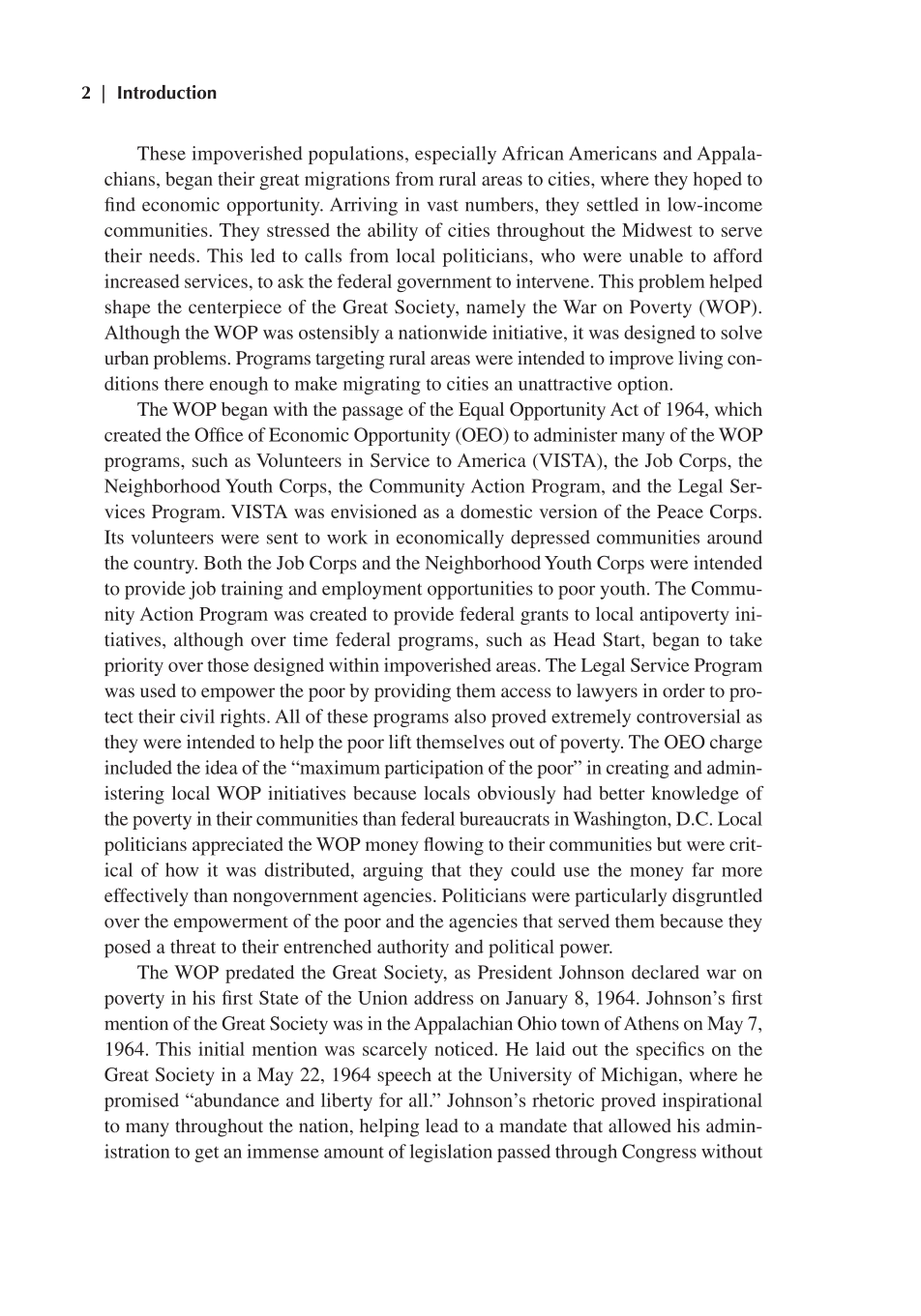2 | Introduction
These impoverished populations, especially African Americans and Appala-
chians, began their great migrations from rural areas to cities, where they hoped to
find economic opportunity. Arriving in vast numbers, they settled in low-income
communities. They stressed the ability of cities throughout the Midwest to serve
their needs. This led to calls from local politicians, who were unable to afford
increased services, to ask the federal government to intervene. This problem helped
shape the centerpiece of the Great Society, namely the War on Poverty (WOP).
Although the WOP was ostensibly a nationwide initiative, it was designed to solve
urban problems. Programs targeting rural areas were intended to improve living con-
ditions there enough to make migrating to cities an unattractive option.
The WOP began with the passage of the Equal Opportunity Act of 1964, which
created the Office of Economic Opportunity (OEO) to administer many of the WOP
programs, such as Volunteers in Service to Amer i ca (VISTA), the Job Corps, the
Neighborhood Youth Corps, the Community Action Program, and the Legal Ser
vices Program. VISTA was envisioned as a domestic version of the Peace Corps.
Its volunteers were sent to work in economically depressed communities around
the country. Both the Job Corps and the Neighborhood Youth Corps were intended
to provide job training and employment opportunities to poor youth. The Commu-
nity Action Program was created to provide federal grants to local antipoverty ini-
tiatives, although over time federal programs, such as Head Start, began to take
priority over those designed within impoverished areas. The Legal Service Program
was used to empower the poor by providing them access to lawyers in order to pro-
tect their civil rights. All of these programs also proved extremely controversial as
they were intended to help the poor lift themselves out of poverty. The OEO charge
included the idea of the “maximum participation of the poor” in creating and admin-
istering local WOP initiatives because locals obviously had better knowledge of
the poverty in their communities than federal bureaucrats in Washington, D.C. Local
politicians appreciated the WOP money flowing to their communities but were crit-
ical of how it was distributed, arguing that they could use the money far more
effectively than nongovernment agencies. Politicians were particularly disgruntled
over the empowerment of the poor and the agencies that served them because they
posed a threat to their entrenched authority and political power.
The WOP predated the Great Society, as President Johnson declared war on
poverty in his first State of the Union address on January 8, 1964. Johnson’s first
mention of the Great Society was in the Appalachian Ohio town of Athens on May 7,
1964. This initial mention was scarcely noticed. He laid out the specifics on the
Great Society in a May 22, 1964 speech at the University of Michigan, where he
promised “abundance and liberty for all.” Johnson’s rhetoric proved inspirational
to many throughout the nation, helping lead to a mandate that allowed his admin-
istration to get an immense amount of legislation passed through Congress without

































































































































































































































































































































































































































































